14 Table Plants: Easy Houseplants For Home & Office
Are you new to gardening or simply looking for low-maintenance houseplants? Check out this list of easy-care table plants to help you get started!
We all start somewhere, no matter what we’re doing or learning. Plants are my happy zone, and they’ve been a part of my life since childhood. Maybe you’re new to indoor gardening and have no idea where or how to start.
Plants are living things, and yes, you can kill them. If it makes you feel any better, a few have died under my watch. That’s why I’m suggesting these plants; they’re tried and true in my book. These houseplants are low maintenance, long-lived, and easy to find in a local nursery, big box store, or online.
I chose these houseplants not only based on my own horticultural experiences but also on comments and questions I’ve received from readers and viewers. You’ll find a few care and buying tips, as well as a video and light conditions explained towards the end.
Note: This post was published on 1/30/2019. It was updated on 12/6/2024.
Easy Table Plants To Grow
I was not raised in the digital age, so this online business has challenged me. I didn’t start Joy Us Garden until I was in my early 50s. Although it’s been very frustrating and confusing at times, I’ve learned so much, and the ride has gotten smoother. You’ll find the same to be true as you get more comfortable being around and caring for houseplants.
If you’re unfamiliar with the word table plants, it means any plant that sits on a table, coffee table, shelf, credenza, buffet, armoire, office desk, etc. (small houseplants or small indoor plants). In houseplant terms, these are usually 4″, 6″, 8″, and 10″ grow pot sizes. They will grow over time, but one does stay small for the long haul.
I’m only touching on a few points in regards to these rockstar houseplants. I’ve done posts and videos on most of them, so click the links for more details.
Snake Plants (Dracaena spp, Mother In Law’s Tongue)
Light levels: Low to high. (I explain the light levels below.)
Snake Plants are about as tough and easy as it gets. They come in a range of leaf patterns, shapes, sizes, and forms. Snake Plants are perfect for busy people, frequent travelers (they thrive on neglect!), or anyone in a dry climate like mine. With their upright, narrow growth habit, they’re among the easiest indoor plants to care for. The taller growing varieties can be floor plants.
More info: Snake Plant Care, FAQs About Snake Plants, Repotting A Large Snake Plant, Snake Plant Leaves Falling Over, 5 Awesome Types Of Snake Plants, Propagating Snake Plants
Peace Lily (Spathiphyllum)
Peace Lilies are beloved houseplants known for their striking appearance and easy availability. Their glossy, dark green leaves add elegance to any space, but their most captivating feature is the long-lasting white flowers that gracefully rise above the foliage like sails. There are several varieties of this plant, in different sizes and leaf forms.
More info: Peace Lily Care

Chinese Evergreen (Aglaonema spp)
Light levels: Low to medium.
This plant was a staple in our commercial accounts, often adorning the tops of filing cabinets. Every variety boasts beautiful patterned foliage, with some of the newer ones showcasing splashes of pink and red. Varieties with darker foliage and minimal variegation are best suited for low-light areas. If you’d like to add a pop of color, those with brighter colors and more variegation thrive in higher light conditions.
More Info: Pink Agalonema Care, Red Aglaonema Care

ZZ Plant (Zamioculcas zamiifolia, Zanibar Gem)
Light levels: Medium light.
ZZ Plants have gained immense popularity in recent years thanks to their stunning glossy, dark green foliage and easy-care nature. Though often sold as low-light plants, they grow best in medium light (bright indirect sunlight). For something unique, the Raven ZZ Plant, with its dramatic black foliage, is a real showstopper. Over time, these plants transform into broad, low-profile floor plants, making them a wonderful addition to any home.
More info: ZZ Plant Care, Raven ZZ Plant Care, Dividing A ZZ Plant
Aloe Vera (Aloe barbedensis, Aloe, First Aid Plant)
Light levels: Medium to high light.
Aloe is a succulent plant and requires bright light to do well. The plump leaves are full of gel, which has various healing properties. This is truly a plant with purpose as it has benefits when used externally and taken internally. Aloe vera is a great plant to have in the kitchen or the bathroom, so it’s close at hand. This one gives a deserty feel and looks great in clay pots. It gets by on little water, so be careful not to overdo it. If the plants are happy, you’ll see pups (babies) appearing from the base of the mother plant.
More info: Aloe Vera Care, FAQs About Growing Aloe Vera, 7 Ways To Use Aloe Vera Leaves, How To Repot Aloe Vera, Indoor Succulent Care For Beginners

Haworthia (Haworthia spp, Zebra Plant)
Light levels: Low to medium.
This is the one that stays the smallest of all the plants on this list—it’s a good choice if you need a plant that stays compact and fits just about anywhere. While there are many Haworthias available, the Zebra Plant is the most popular. As succulents, they thrive with infrequent watering and rank among my top three plants for minimal care needs. They make great desktop plants, especially when growing in a beautiful decorative container.
More info: 13 Problems You May Have Growing Succulents Indoors, Choosing Indoor Succulent Plants & Pots

Jade Plant (Crassula ovata)
Light levels: Medium to high.
Jade Plants are succulents with glossy, plump green leaves that develop a sturdy trunk structure as they grow, making them an ideal choice for bonsai enthusiasts. Be cautious with watering—less is more for this plant. While it’s available in a few variegated forms and a small-leaved variety, these are more commonly found in landscaping than as houseplants.
More info: Jade Plant Care, How To Repot Jade Plants, Indoor Succulent Care For Beginners
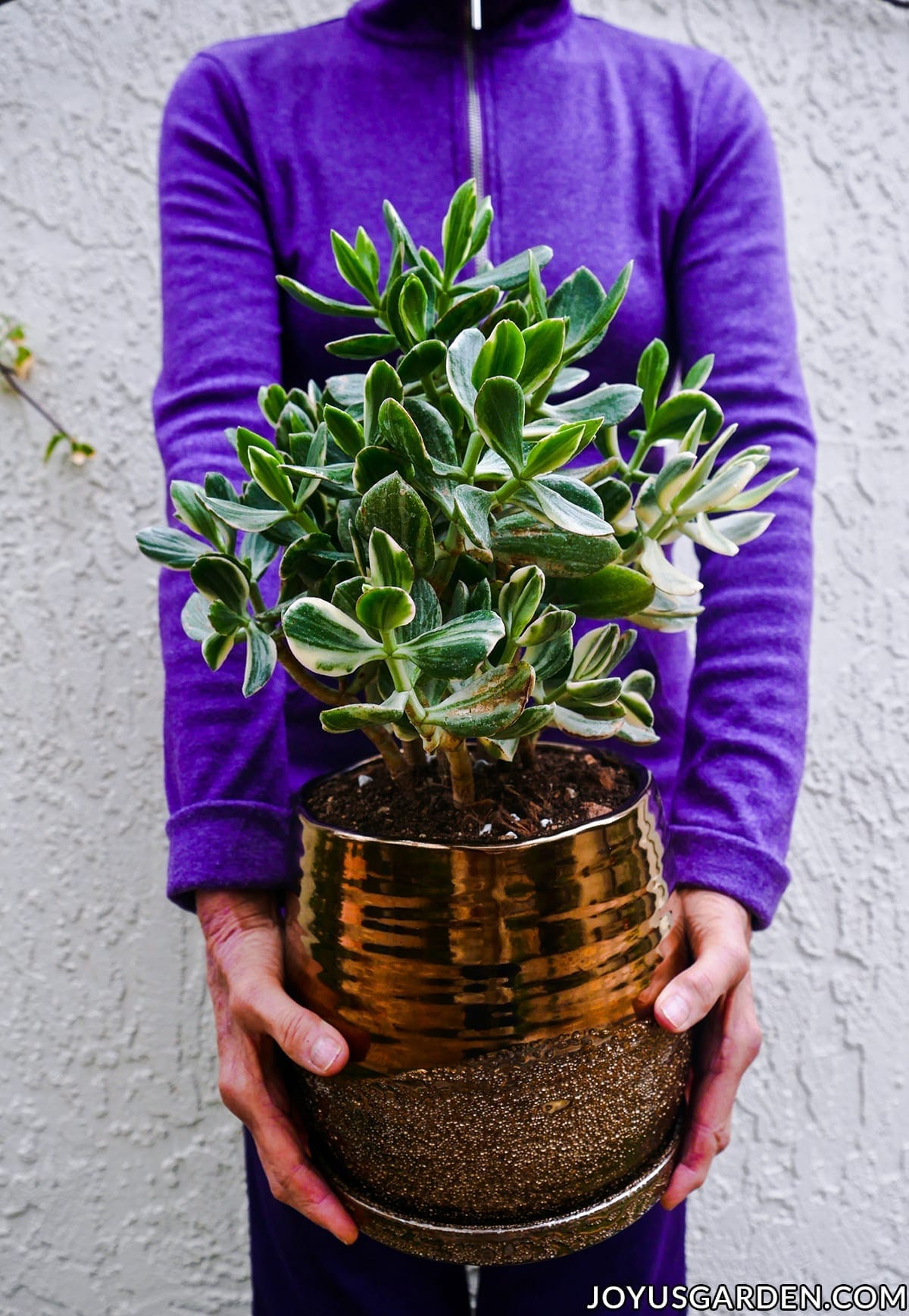
Lucky Bamboo (Dracaena sanderiana, Ribbon Plant)
Light levels: Low to medium.
This a fascinating and unusual houseplant that’s truly an attention-getter. This sculptural plant is most commonly sold growing in water but can also be grown in soil. Lucky Bamboo has been a part of Chinese culture for thousands of years but has really skyrocketed into popularity in the past twenty years. It’s known to bring good energy, good luck, and feng shui into your home. You can find it in many different shapes, forms, and arrangements, from a single stalk to an arrangement with multiple twisted or intertwined stalks.
More info: Lucky Bamboo Care, 26 Things To Know About Growing Lucky Bamboo, Repotting Lucky Bamboo Plants

Peperomia
Light levels: Low to medium.
Peperomias are attractive houseplants available in a wide variety of foliage shapes, textures, and colors, as well as sizes and forms. I’ve been growing peperomia plants for a long time and find them one of the most easy-care tropical indoor plants. I’d hazard a guess that there are 25-35 peperomia species and varieties sold in the houseplant trade. Some require a bit more light than others to do well, but the care is generally the same for all peperomia houseplants.
More info: Watermelon Peperomia Care, Baby Rubber Plant Care, Ripple Peperomia Care, Raindrop Peperomia Care, Peperomia Hope Care, Peperomia Plant Care FAQs

Ponytail Palm (Beaucarnea recurvata, Elephant’s Foot)
Light levels: Medium to high.
Ponytail Palms are intriguing plants known for their wild, cascading foliage emerging from a bulbous trunk. They make great table plants due to their slow growth indoors. They certainly add a playful, lively touch to any space. They require little water, and are an ideal choice for busy plant parents or frequent travelers.
More info: Ponytail Palm Care

Christmas Cactus (Schlumbergera, Holiday Cactus)
Light levels: Medium.
Looking for a stunning bloomer to brighten the holiday season? A Christmas Cactus is a great choice! This long-lasting succulent isn’t just for the holidays—its attractive foliage and easy-care nature make it a keeper year-round. With proper care, it can thrive for years, rewarding you with annual blooms. Most sold under the name Christmas Cactus are actually Thanksgiving Cactus. My two never fail to flower each year.
More info: Christmas Cactus Care, Getting A Christmas Cactus To Flower Again, Christmas Cactus FAQs, Christmas Cactus Repotting

Pothos (Epipremnum, Devil’s Ivy)
Light levels: Low to medium light.
For lush, trailing vines, Pothos is unbeatable as a fast-growing favorite. Small roots form at the leaf nodes, making propagation a breeze in water or soil. Available in a variety of forms—from solid green to striking variegations—Pothos add vibrant charm to any space. Their trailing stems can grow over 20 feet long, making them perfect for creating dramatic displays. The ones with variegation and chartreuse foliage need medium light. Jade Pothos, with solid green foliage, is the one that tolerates lower light. These are also suitable for hanging baskets and containers.
More info: Pothos Plant Care, Answering Your FAQs About Growing Pothos, How To Grow Pothos With Lush Full Vines, Golden Pothos Care, Neon Pothos Care, Pothos N’Joy Care, Marble Queen Pothos Care

Spider Plant
This popular plant is fun because of the babies that are produced on long, arching stems, making it super easy to propagate and share new plants with friends. One of mine grows outdoors here in Tucson year-round, so you know this plant is tough and adaptable. Spider Plants are available in different variegations as well as solid green. These are also suitable for hanging baskets and containers.
More info: Spider Plant Care, How To Grow Spider Plants (FAQs)
Hoya
Light levels: medium to high.
Wrapping up this list of table plants are Hoyas. They’re succulent-like due to their thick, waxy leaves, but they aren’t classified as such. These slow-growing yet resilient plants can reward you with stunning blooms, especially in bright light. While they’re generally low-maintenance, keep an eye out for mealybugs and aphids and take action to control them quickly. With so many hoya varieties available, you will surely find one with an appealing leaf shape, color, and form to suit your taste. These are also suitable for hanging baskets and containers.
More info: Hoya Plant Care, Sweetheart Hoya Care, How To Propagate Hoyas

Light Levels (in a nutshell)
I have always relied on natural light for my houseplants, so this advice is based on that. Keep in mind that light levels change with the seasons, so you might need to move your plants closer to a light source during the darker winter months.
Only a handful of houseplants tolerate strong, direct sunlight—most will burn if placed in hot windows. Most indoor plants do best in bright indirect light, considered a medium or moderate exposure. Conversely, a few of the plants listed above will tolerate low light, but they won’t do too much, if any, growing.
* Low light- Low light isn’t no light. This is a northern exposure with no direct light.
* Medium light – This is an east or west exposure with 2-4 of sunlight coming in the windows per day.
*High light – This is a west or south exposure with at least 5 hours of sunlight coming in per day.
Just know that you can have a low light plant in a medium or high light room, but it needs to be at least 10-15’ feet away from the windows. I rely on intuition when it comes to light—if a plant isn’t thriving, I simply move it to a new spot. Signs like legginess, smaller foliage, or fading color often indicate insufficient light. You can find more detailed information on light and houseplants here.
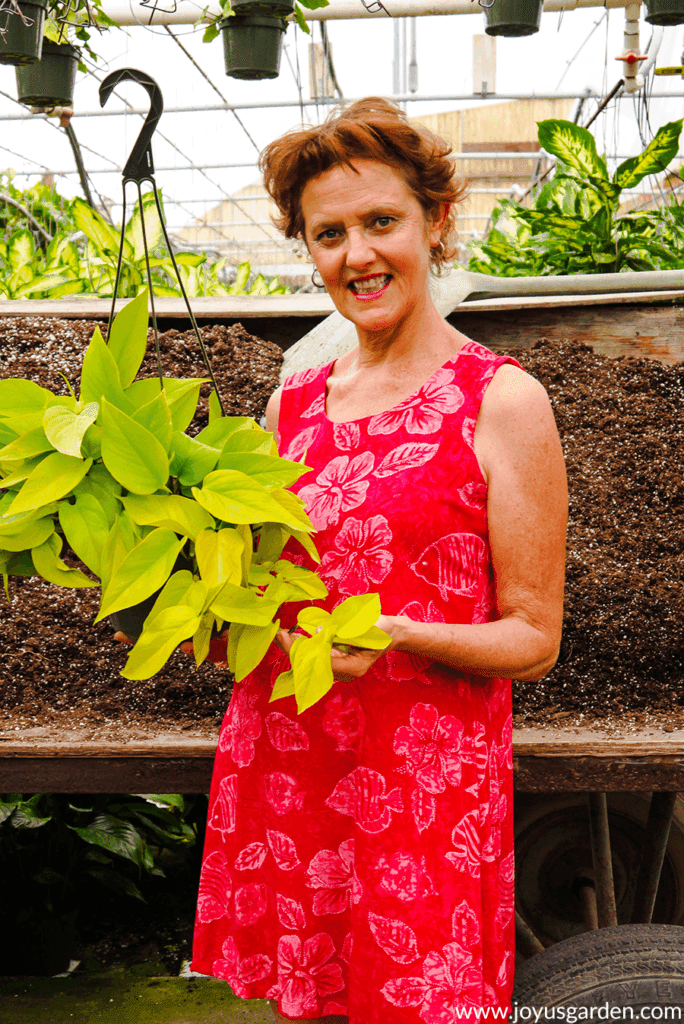
Buying Tips/Care Tips
Start with small plants. Small plants are cheaper and will be a great way to build up your confidence. A 6″ Pothos costs around 10 bucks, whereas a 6′ Dracaena can cost about 50 or 60. Just like if you’re new to cooking, you probably don’t want to start with a Thanksgiving dinner for 10!
Don’t buy plants on a whim. That fluffy little maidenhair fern is pretty as can be, but it isn’t a long-lasting houseplant. The same goes for quite a few other plants, too.
Know the requirements of the plant and where it’s going. You wouldn’t want to place an Aloe vera in a bathroom with no natural light, nor would a Lucky Bamboo do well in a hot, sunny window. Know where the plant is going and what lighting conditions it requires before buying it. It’s best not to impulse buy if you want to grow plants for the long haul.
Avoid overwatering. This is the most common cause of houseplant death. It’s better to keep the majority of houseplants on the dry side rather than constantly moist. The roots also need oxygen and will die from root rot. As I say, go easy with the “liquid love.”
Low light does not equal no light. Plants need chlorophyll, which absorbs the light and keeps them green and growing (the process explained in a nutshell!). Most houseplants won’t do well in low light over the haul. Plants labeled as low light always do better in medium light.
Fertilizing/feeding is a good idea. Even if you have just a few houseplants, they’ll thrive with a little nourishment now and then. Fertilizing provides essential nutrients to keep your plants healthy and support strong growth—think of it as vitamins for your plants!
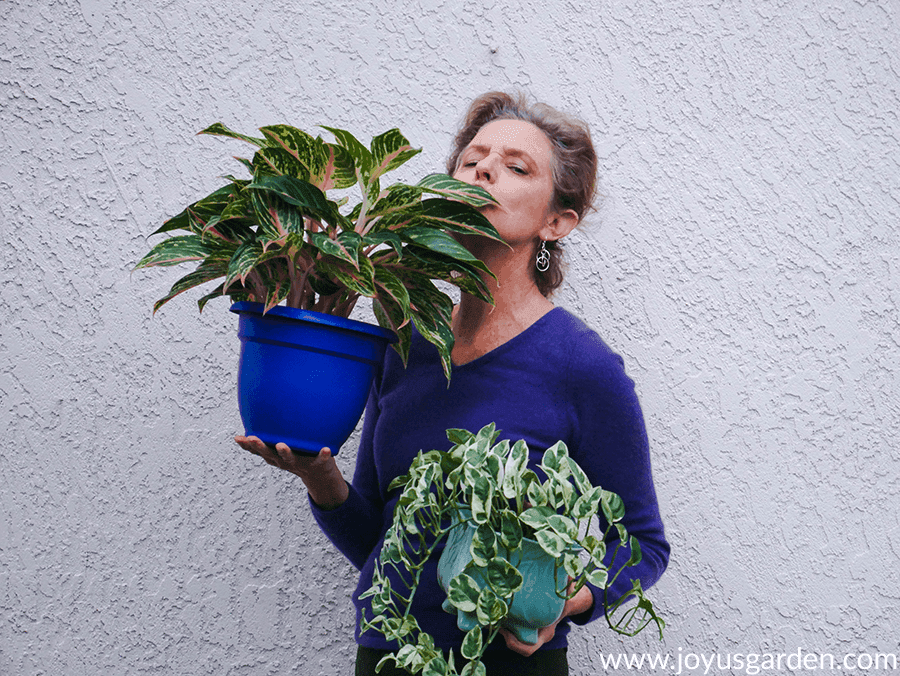
Table Plants Video Guide
Conclusion: Easy table plants bring a touch of greenery and beauty to your home without demanding much time or effort. Whether you’re a busy person, a frequent traveler, or someone just starting their houseplant journey, there’s a plant on this list that will suit your space and lifestyle perfectly. Remember, every plant has its preferences, but they’ll reward you with lush growth and vibrant foliage if you give them a little love (and the proper care).
Try one or two of these low-maintenance plants, and you’ll be hooked before you know it! Once you see how easy they are to care for, you might just find yourself adding more—because the more plants, the merrier!
Happy gardening,






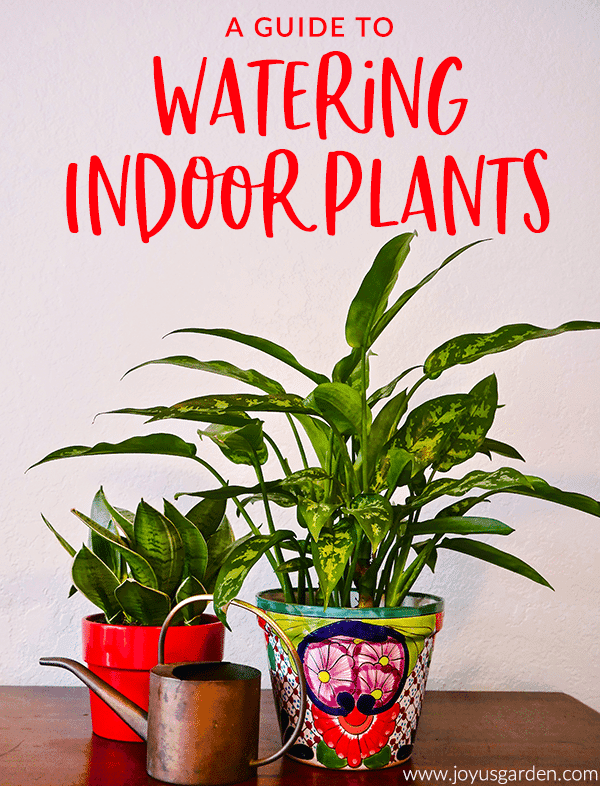
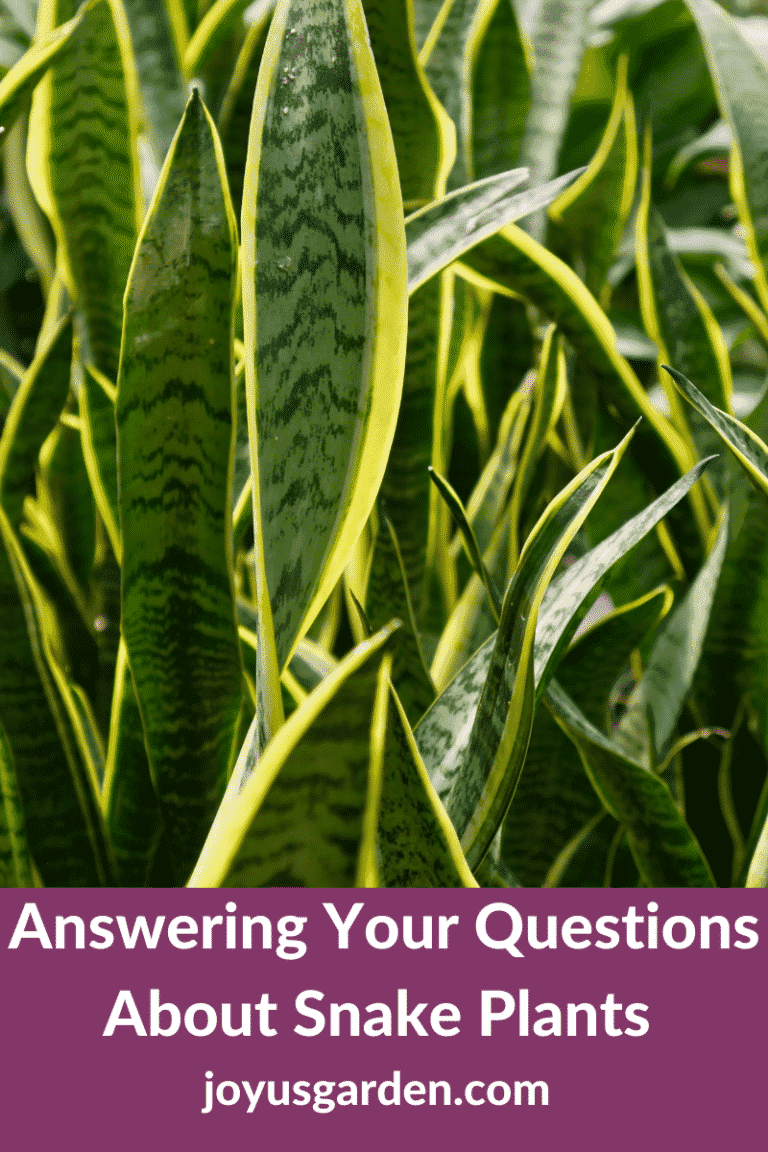
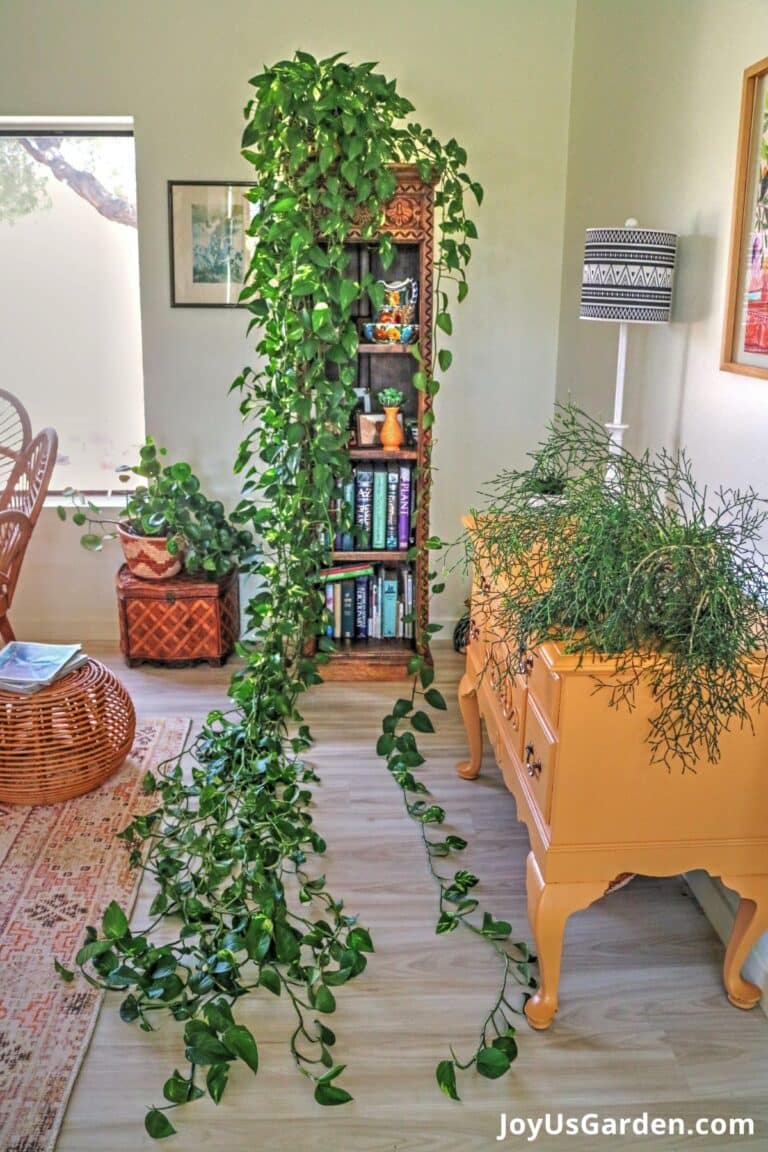
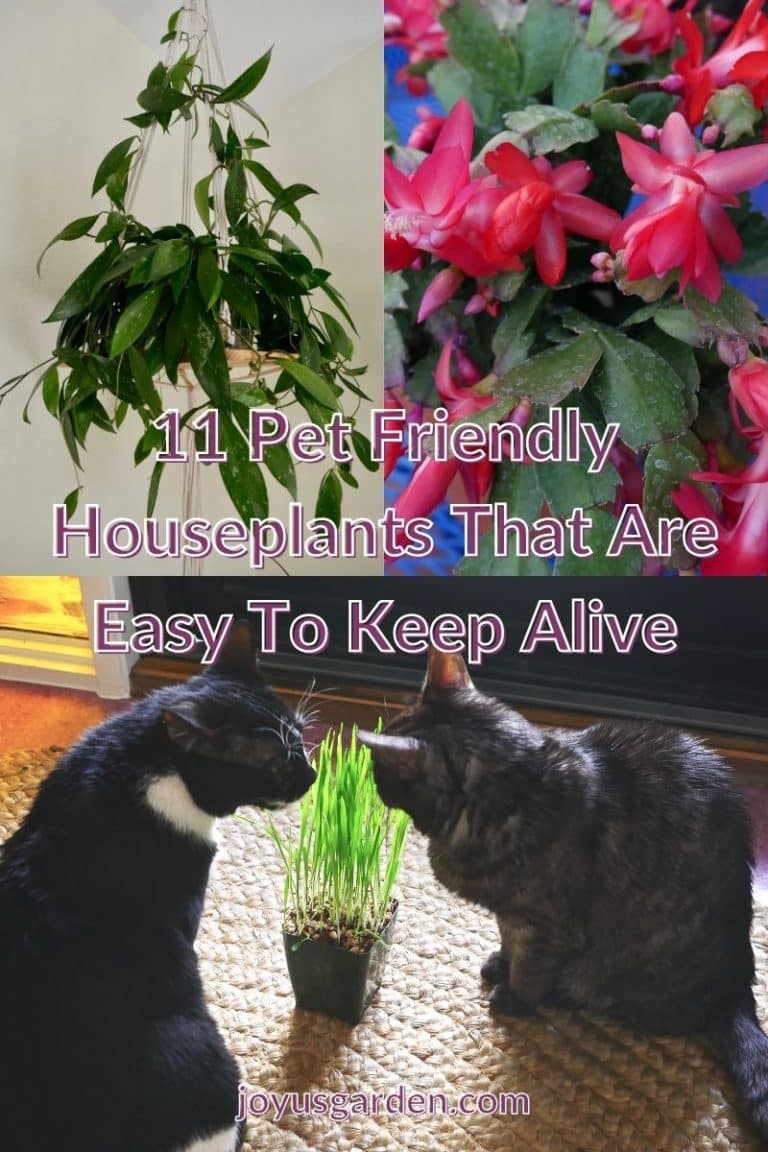

Enjoy your site and blog but I’ve searched for info on fertilizing/feeding houseplants without success. Would you please do a blog on proper fertilizing, i.e. which plants require nitrogen? What do the fertilizer numbers mean and how to determine which plant requires what and when to fertilize, etc. Info appreciated.
Hi Debra – That’s a great idea. I’ll put it on my list of posts & videos to do. It’ll probably be live in May or June. Nell
I don`t like to many green plants in my home,i like the flower ones.
Flowering plants are wonderful too Ingrid. Green plants live much longer though. Nell
Hi,
Can you advise plants for my living room which has low light. The top half of room (kitchen) has lots of light but living room is further away from windows and can be quite dark at times.
I had a devils ivy with the silver leaves and had to move it into kitchen where it seems happier. Leaves were darkening etc.
Any advice appreciated.
Caroline
Hi Caroline – The plants in this post are ones I’ve found to do the best in low light (which are easy care): https://www.joyusgarden.com/10-easy-care-houseplants-for-low-light/ Hope that helps! Nell